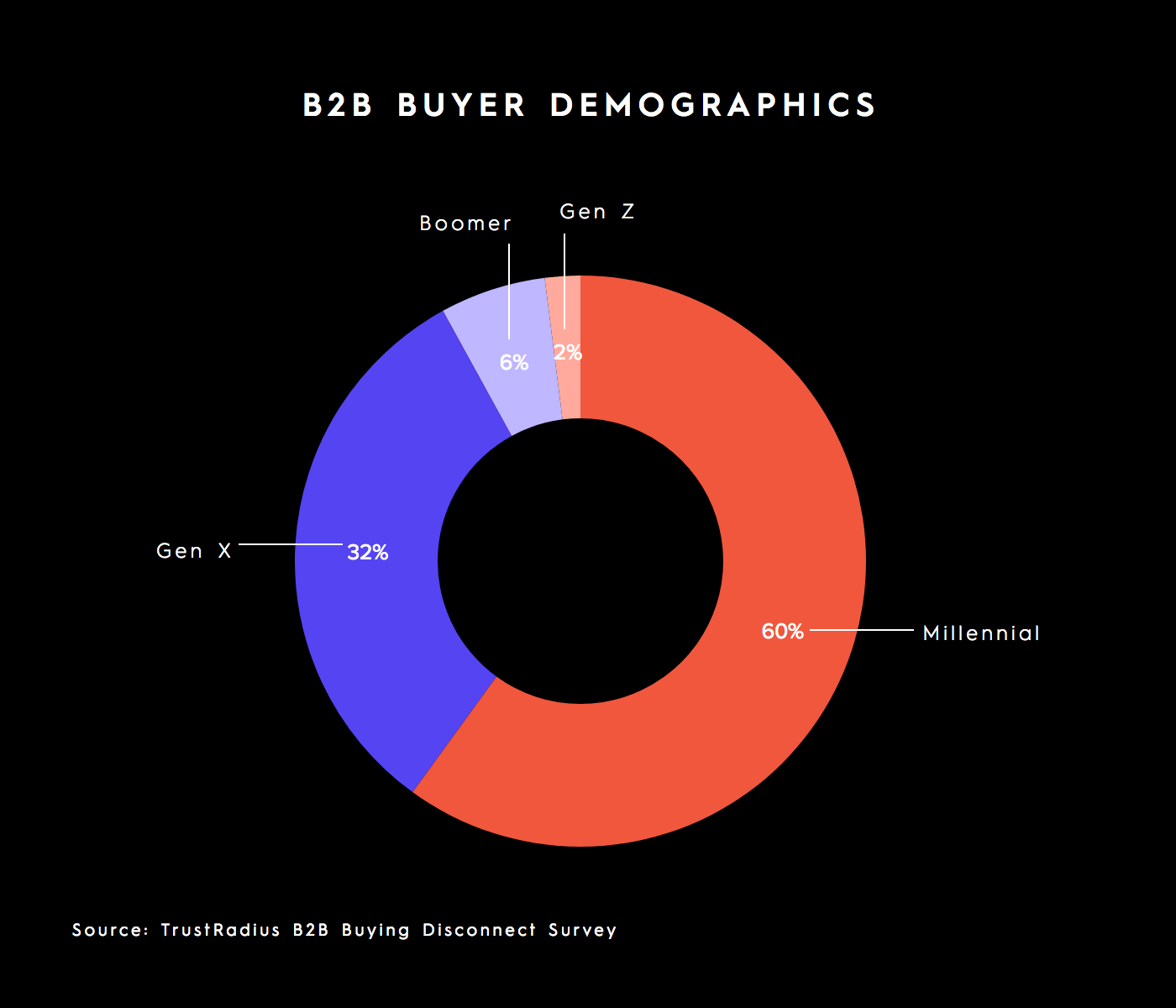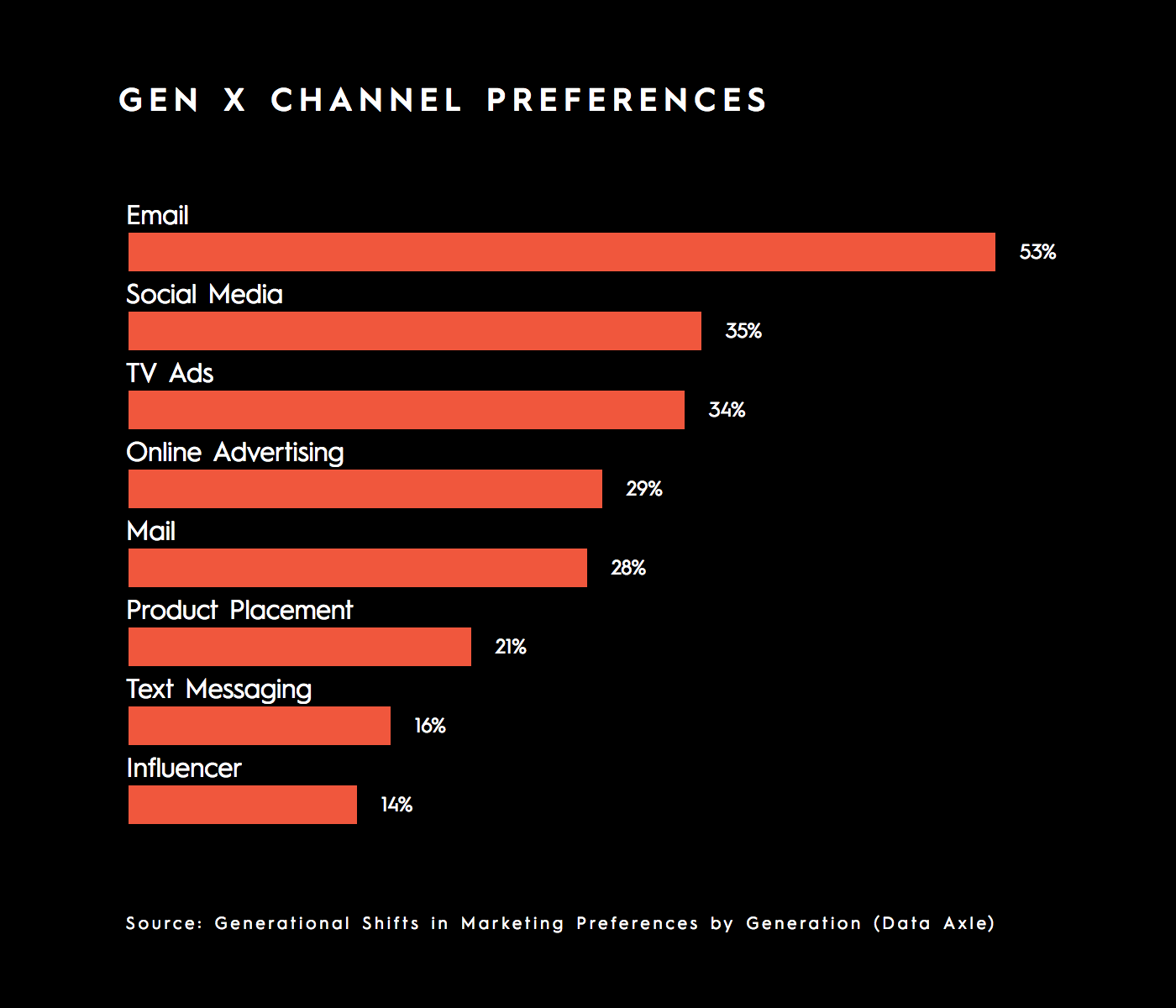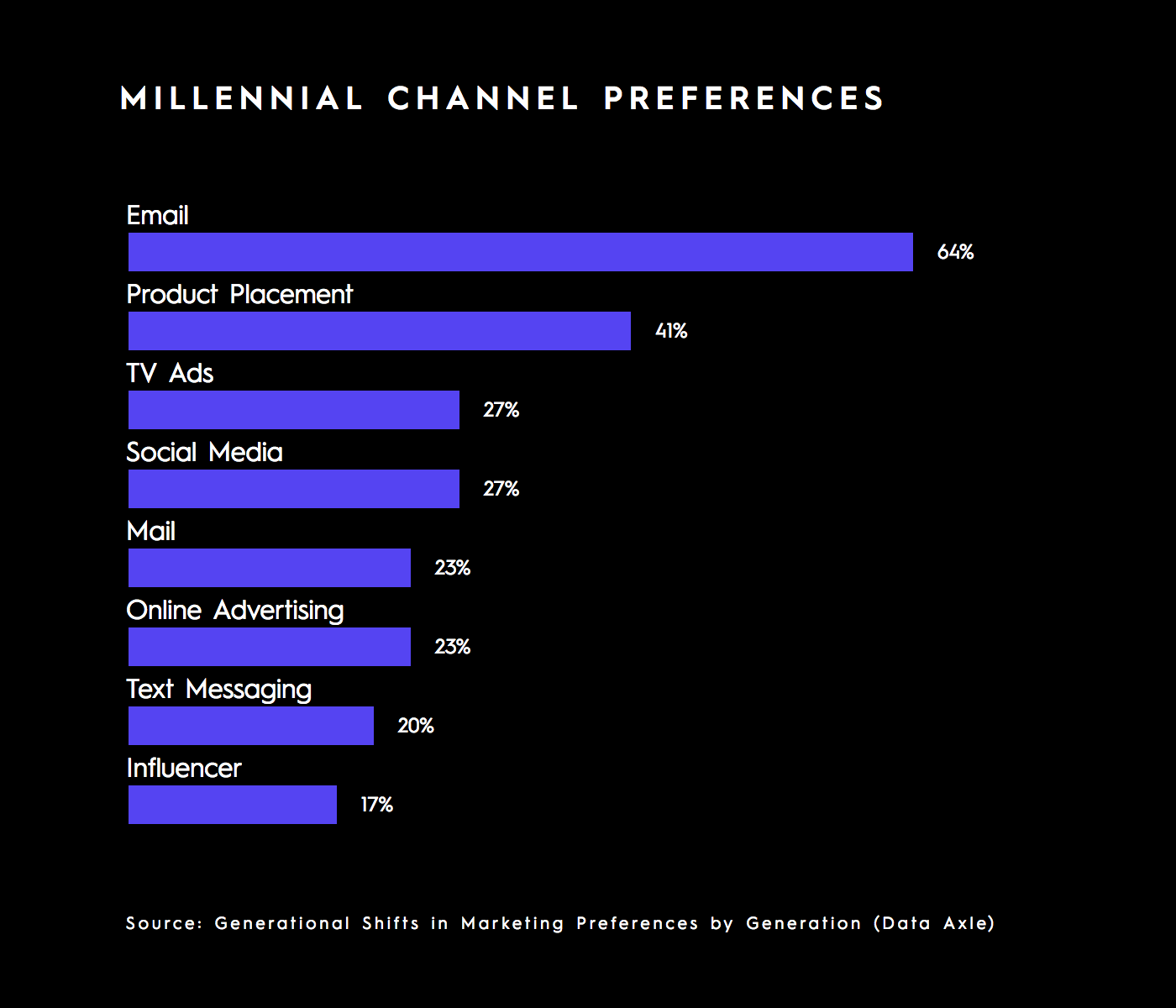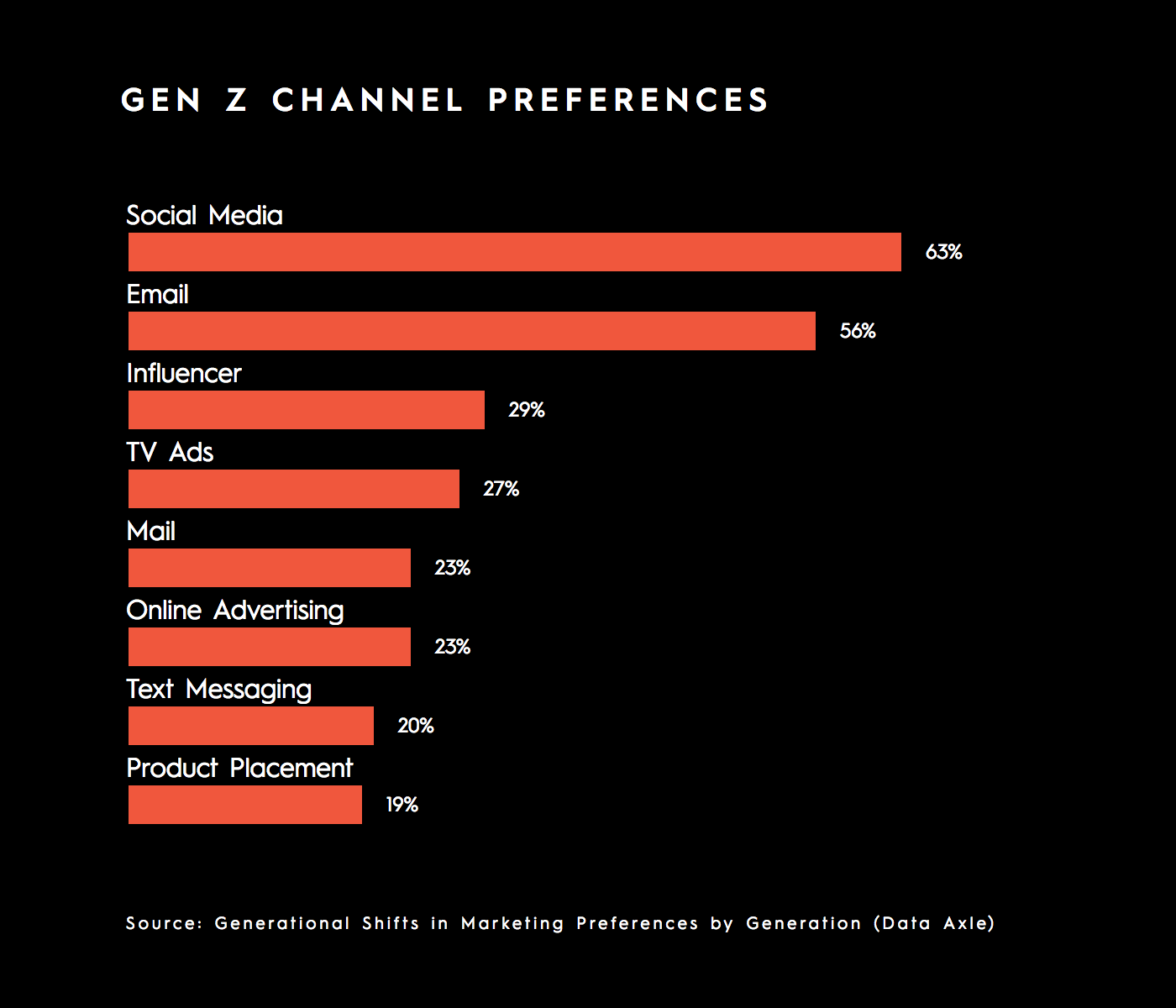The number one rule of successful marketing is know your audience. But in B2B, that audience is changing in significant ways. Today, Gen X and Millennials are the biggest buyers in the game. (And as Gen Z moves up, they will soon grab an even bigger slice of the pie.) So, if you want your marketing to be successful, you need to understand how each demographic’s unique drivers influence their purchasing decisions, how B2B buying is shifting as a whole, and how you can tailor your marketing to be as effective as possible.

Lucky for you, today we’re sharing our best tips and tricks to help you connect with (and convert) B2B buyers across generations.
What to Know About B2B Buying
But first, let’s talk about a few major trends that B2B marketers should be aware of, regardless of their specific audience.
- The path to purchase is long—very long. Switching suppliers takes time and energy. According to Hubspot, the average SaaS deal takes 84 days to close. Understanding your audience is the key to keeping them interested and engaged at every stage, so you should always focus on relationship-building from the jump.
- Brand experience is everything. You need to tell a strong, consistent brand story at every touchpoint to ensure a seamless experience. You may tell that story in different ways to different audiences, but it should be the same story. (If you don’t know what your brand story is, use our free brand-building toolkit to clarify it before you test it in the marketplace.)
- Personalization is everything. According to Data Axle, 81% of all consumers want to receive personalized communications from brands they buy from. Fortunately, marketing tools make personalization that much easier to build unique buyer journeys for each generation. The more people feel seen, valued, and respected, the more likely they are to work with you. Personalization is the key to that.
Keep these three things in mind as you shape your marketing strategy, and you’ll be ahead of the curve. But how do you market to individual audiences successfully, especially when they come from different generations? Well, the formula is somewhat simple:
- Know their preferred channels. Find out where they “live” in the marketplace, and create a steady stream of content to fill their feeds.
- Create the right content. Deliver information the way they want to consume it, whether that’s infographics or videos. (Learn more about the 13 types of B2B content and how to use it.)
- Use an emotional hook. B2B buyers are buying on behalf of their business, but there is always a personal investment in the purchase. If you can identify what they’re motivated by, how they like to be spoken to, and what makes them feel empowered, you can tailor your marketing to speak to every one of those drivers.
The key, of course, is understanding what each of those things looks like to each generation. So let’s dive into the minds of the three growing B2B demos: Gen X, Millennials, and Gen Z.
How to Market to Gen X B2B Buyers
Gen Xers were born between 1961 and 1980. They’re children who came of age during the ’80s and ’90s, witnessing the end of the cold war and the rise of tech. Many were latch-key kids with a strong independent streak who rely on themselves and are more distrustful of “establishment” authority—particularly large corporations. Having witnessed many boomers slave away at corporate jobs, they crave more work-life balance and autonomy, as they define themselves by their profession more than the company they work for.
Their preferred channels: According to Data Axle, email, social, and TV are Gen X’s top 3 most preferred channels.

Their preferred content: Credibility and efficiency are important to Gen X. According to Meta & B2B International Research, infographics and whitepapers are their preferred formats for B2B content.
How to emotionally hook them: Thanks to their strong independent streak and distrust of sleazy corporations, Gen X craves directness and transparency. They also care a lot about their individuality and identity.
- Avoid corporate buzzwords. Speak to them like people, and don’t try to talk circles around them. (They are generally allergic to salespeople.) Simply be honest and transparent about who your company is, what you do, and how it can benefit them.
- Speak to their own day-to-day pain points. They don’t want to feel like a cog in the machine, which simply exists to serve their corporate overlords. Although your B2B product/service will help their larger business, hone in on how it will make their own personal work life better. Bonus points if you can tie it to them achieving better work-life balance (e.g., less stress, fewer late nights, etc.).
- Let others do the talking for you. Because Gen X is the anti-establishment generation, they don’t trust a corporation’s words as much as a real user or consumer. Make use of testimonials, online reviews, influencers, etc. This shows that other people support your brand, making Gen X feel safer to do so too.
Tip: See more tips to write emotional, compelling copy that makes you seem more human to Gen X.
How to Market to Millennial B2B Buyers
Millennials were born between 1981 and 1995. They’re the first generation of digital natives who grew up with tech as a part of their day-to-day lives. Having grown up amidst a backdrop of war and social unrest, they demand more accountability from corporations and governments but are less likely to pledge their loyalty. For that reason, they consider themselves as employees who work with their employers—not for them. Freedom and flexibility are their biggest drivers.
Their preferred channels: According to Data Axle, email, social, and TV are their top 3 go-tos. But because they are digital natives, they generally use social media to gather news and views about society and business.

Their preferred content: According to Meta & B2B International Research, social Media (aka microcontent) and videos are their preferred content.
How to emotionally hook them: If you want to cater to millennials in B2B, get out of their way. They are media literate and digitally savvy, used to sourcing their own information online. They don’t need or want to be hand-held along the buyer journey. In fact, according to Gartner, Millennials are the most skeptical of salespeople, with 44% of millennials preferring no sales rep interaction in a B2B purchase setting.
- Provide as much information as possible. Create an easy-to-navigate site packed with high-value content. That includes things like guides, templates, toolkits, resources, and other key information that helps them get to know your product and your brand. Be a thoughtful resource, but don’t try to lecture them. Simply make the content thorough and visible, and let them explore as they please.
- Let them try things on their own. Demos and trials are key to millennials, who always want to try before they buy. (This also helps them sell their own team on your product/service, as their own experience with your brand will make them a brand advocate.)
- Ask for their feedback/participation. They’re often criticized for being the “participation trophy” generation because they do want to feel seen and acknowledged. And as customers, they can become your greatest asset (to provide the testimonials that Gen X especially likes—wink-wink.) Whether it’s a social media poll or a quick survey, make use of digital tools that let you interact—without a phone call. (Again, Millennials will likely run as soon as you ring their phone.)
- Share your values. Millennials are particularly interested in your brand’s beliefs, so share them publicly.
Tip: See our tips to turn your brand values into content for Millennials.
How to Market to Gen Z B2B Buyers
Gen Z was born after 1996. They’re the first generation born into a fully digital world, and they live online-centric lives. But having grown up in a highly unstable world, they crave security and stability. Much like Millennials, they are critical of company behavior (both in who they buy from and who they work for), but they very much consider themselves entrepreneurs who happen to work with a company. They are job hoppers, as they are focused much more on their career than the company they work for. But they do crave financial stability.
Their preferred channels: According to Data Axle, social, email, and influencer marketing are their top 3 channels, as they give much more weight to social content and other people’s opinion about a brand.

Their preferred content: While they will consume all sorts of social content, video is the most preferred medium, particularly through platforms like TikTok, YouTube, and Instagram. (See our guide to brand video to create the right content for them.)
How to emotionally hook them: Gen Z is similar to Millennials in that they are highly savvy and know how to navigate online spaces effortlessly. Successful brands should empower them to do as much as possible on their own.
- Create a seamless online experience. Gen Z is a highly digital and independent generation. Create resources, guides, interactive demos, and an easy-to-access suite of content for them to explore. Appeal to their entrepreneurial spirit by empowering them to make the right choices for their B2B brand.
- Offer education that increases their legitimacy. As the youngest generation in the workforce, they’re eager to prove themselves to higher-ups in their company. If you can create educational and practical content that improves their knowledge, makes them look smarter, and helps them do their job better, they will greatly appreciate it. (Here are 5 easy ways to educate them in SaaS marketing.)
- Share your culture online. Gen Z is very selective about the brands they buy from. They want to buy from holistic brands that are good to their customers and employees. And although they don’t want salespeople calling their phones or in their face, they do want to know that there are happy humans working for the brand. Capture their attention by publishing fun culture content on your social profiles. (Here are 7 ways to do that.)
- Use influencers. According to Hubspot, 55% of Gen Z-ers say recommendations from influencers are one of the most important factors in their purchase decision. To make the most of this, see Hubspot’s guide to influencer marketing. Remember: Niche and micro-influencers are particularly powerful in these areas.
Note: Although Gen Z is the smallest portion of B2B buyers, this is the most important demographic to keep an eye on in the next decade.
How to Strengthen Your Marketing Across the Board
No matter which generation you’re marketing to, understanding their unique needs, how your brand serves those needs, and how to tell stories that speak to those needs is the only way to win. If you’re looking for a few ways to do that…
- Document your Ideal Customer Profiles and Personas. In B2B, you need to know what type of company/organization you’re marketing to, and who in that organization has the buying power. See our guide to create ICPs and Personas to segment and document your audience. This helps you brainstorm better ideas that really resonate with your audience.
- Refine your buyer’s journey. If you want to make the most impact, you need to deliver the right message at the right time. See our guide to refine your buyer journey and make sure you’re providing a seamless brand experience for your audience.
- Be honest and authentic. Don’t overthink your content too much; just focus on putting out stuff that feels real and human. This is especially true as it relates to video. In fact, according to Hubspot, 78% of consumers say it’s more important for a marketing video to be authentic and relatable than to be polished with high-quality video and audio.
Above all, if you need outside help, make sure to choose the right agency partner. See our tips to find a B2B agency with the right expertise, see our content strategy FAQs, or hit us up directly. We’d be happy to help you connect with your audience—whoever they are.



